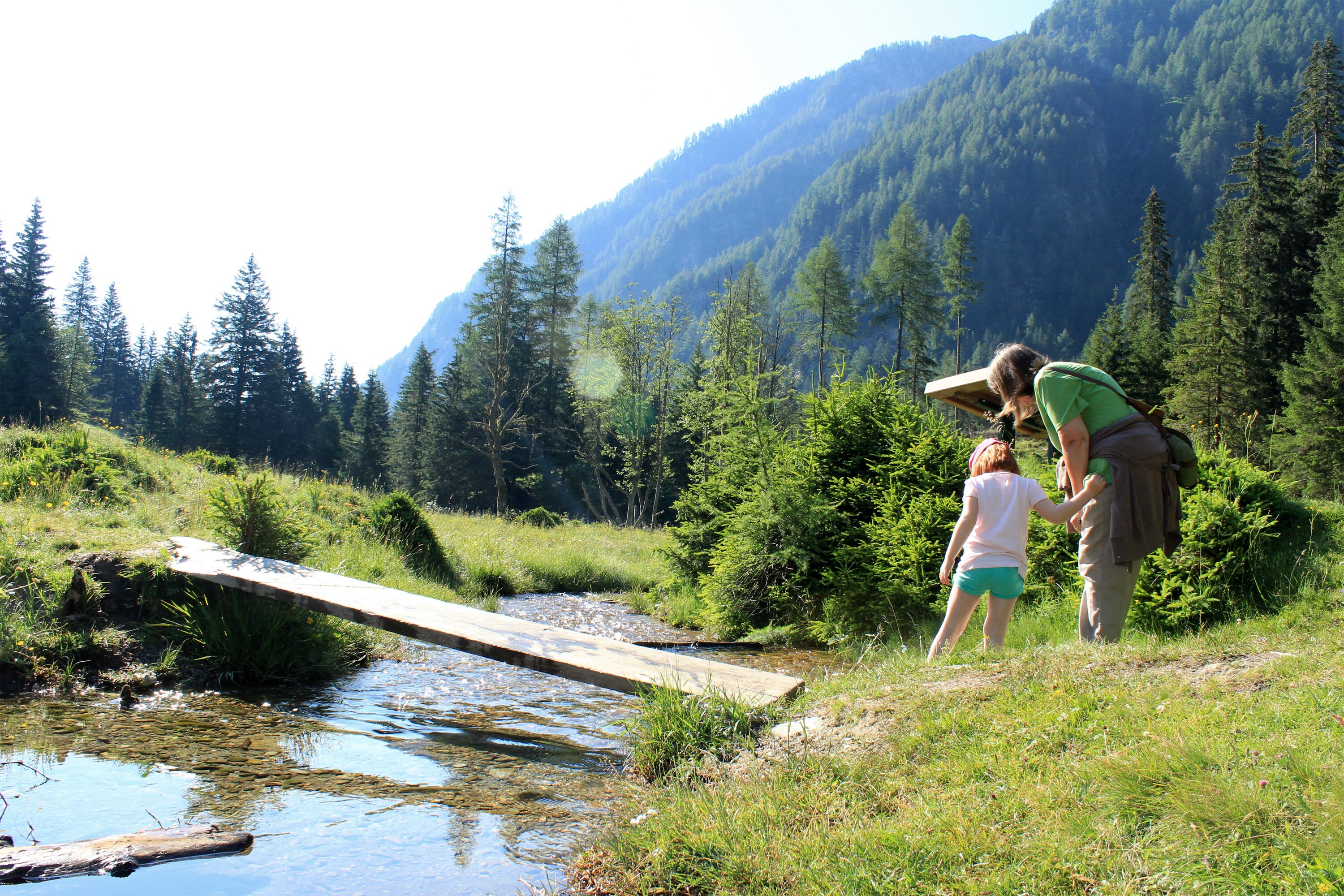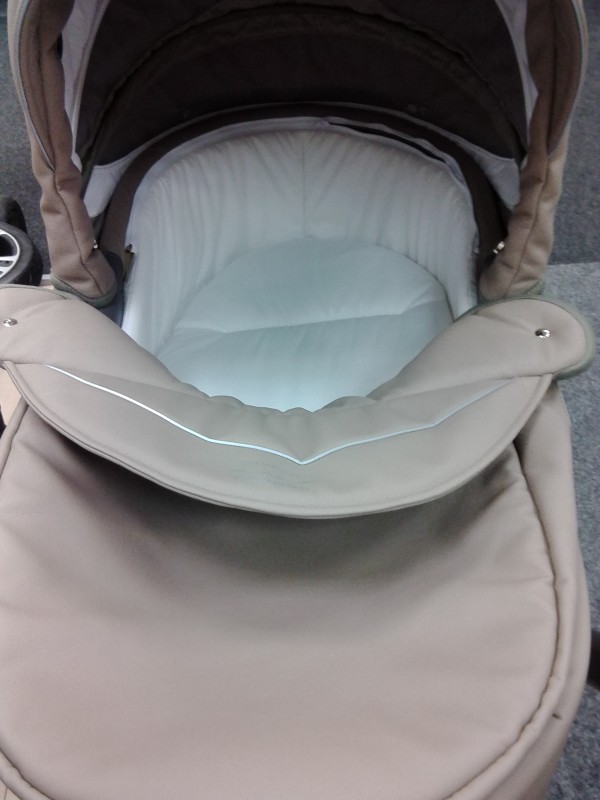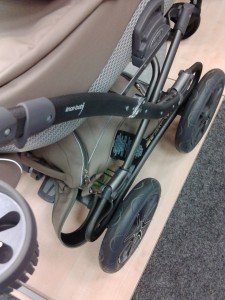Sabine Schlögl considers whether a stroller or a stretcher is more suitable for hiking and comes to the result: In reality, something else matters a lot more.
All too often we asked ourselves the question when we went on excursions with our daughter: "Do we take the stroller or the stretcher?" Everyone has to make the decision himself, because both have advantages and disadvantages.
On good An example of a hike that is suitable for both variants is the Bacher Erlebnisweg in the Pöllatal. Admittedly, the simple route of five kilometers is no longer an apline “hike”, but for children up to the age of 8 the stream experience trail has its charm.

The right means of transportation for all ages
We tested the route twice: once when our daughter was two and a half years old, with the stroller along the street and at the age of five as a "self-runner" following the stream. And we already have the first selection criterion when it comes to the question of stretcher or pram: age! In addition to the fact that both aids become completely superfluous after a certain age, the stroller offers more freedom of movement. A child who has just learned to walk on two legs also wants to try it out and show it. You would often have to unbuckle and buckle and lift with a stretcher. It’s easier and faster with the stroller.
Pushchairs are simply not suitable for many tours – even if they are advertised as "off-road". And some hiking trails that are considered “suitable for pushchairs” are actually a difficult undertaking.
You can try the four wheels along the Bacher Erlebnisweg for a while, but the path is getting narrower and often you have to carry the pram. As “locals”, we already knew this during our first test and pushed the stroller on the asphalt road. This path is of course less appealing, but you get on very well and easily make the way there and back.

The stretcher is not the same
Since a stroller also has a proud weight, and the ride uphill on bumpy Because of not getting easier, I prefer to wear a stretcher when hiking. But there is also a decision to be made. Stretcher is not the same as stretcher: On the one hand there is the "Kraxe", better known under the name "Back Carrier" – half backpack half child carrier. The advantages here are: plenty of storage space, a linkage for parking, sun protection (if available!) And that the child is not in direct contact with the body. In contrast to the belly carriers, the second option, you do not heat up each other.
The advantage with belly carriers is that you can use them earlier. With the Kraxe, the baby must be able to sit independently and the weight varies depending on the manufacturer and price category. Belly carriers are very light and can be stowed in the backpack. Which brings me to the next tip for "tired walkers": If you have a stroller or back carrier with you, many a little brain thinks "Why go there when I’m carried or pushed ?!" is no longer possible.

What bothers me personally about the back carrier is that you can feel and balance every movement of the child. The sleeping position of the little ones in the stretchers usually doesn’t look comfortable at all – small neck pillows can also help here, which can also be used in the car seat. Therefore, we were mostly on the go with the baby carrier and adapted the tour to the weather, age and "family motivation". Because no matter whether stroller, backpack or stretcher – you will hardly climb the Großglocker with it.
You can have much nicer experiences with children anyway if you take leisurely “walks” without time pressure and pedometer. And exactly such an eventful path awaits you along the Lieser in the Pöllatal – with wonderful places to stow, marvel and build a Waldhaus.
RELATED ITEMS
-

10 huts for trips with the stroller, mountain worlds
Even with very small babies you can hike in huts – provided that strollers and huts are suitable. We present you 10 perfect goals for…
-

Hiking with children: the best tips and tours, mountain worlds
We present you with a lot of interesting facts about "With children on the mountain": from touring and hut tips to inspiring stories and even more…
-

Which stroller to buy? What you should pay attention to when buying
The time before the baby is born is probably one of the most exciting times for young parents. The anticipation is great and especially in the…
-

The right tires for your stroller – pneumatic tires or hard rubber tires
Since we have been doing the test reports for strollers, we have received regular inquiries about which tires should be preferred for strollers. A question that…

